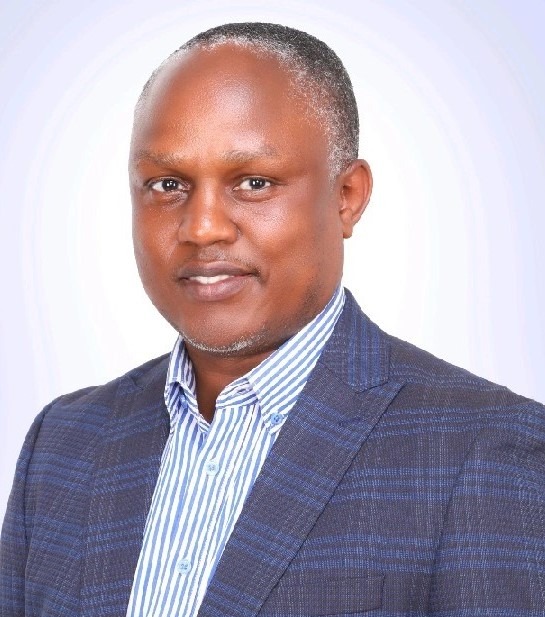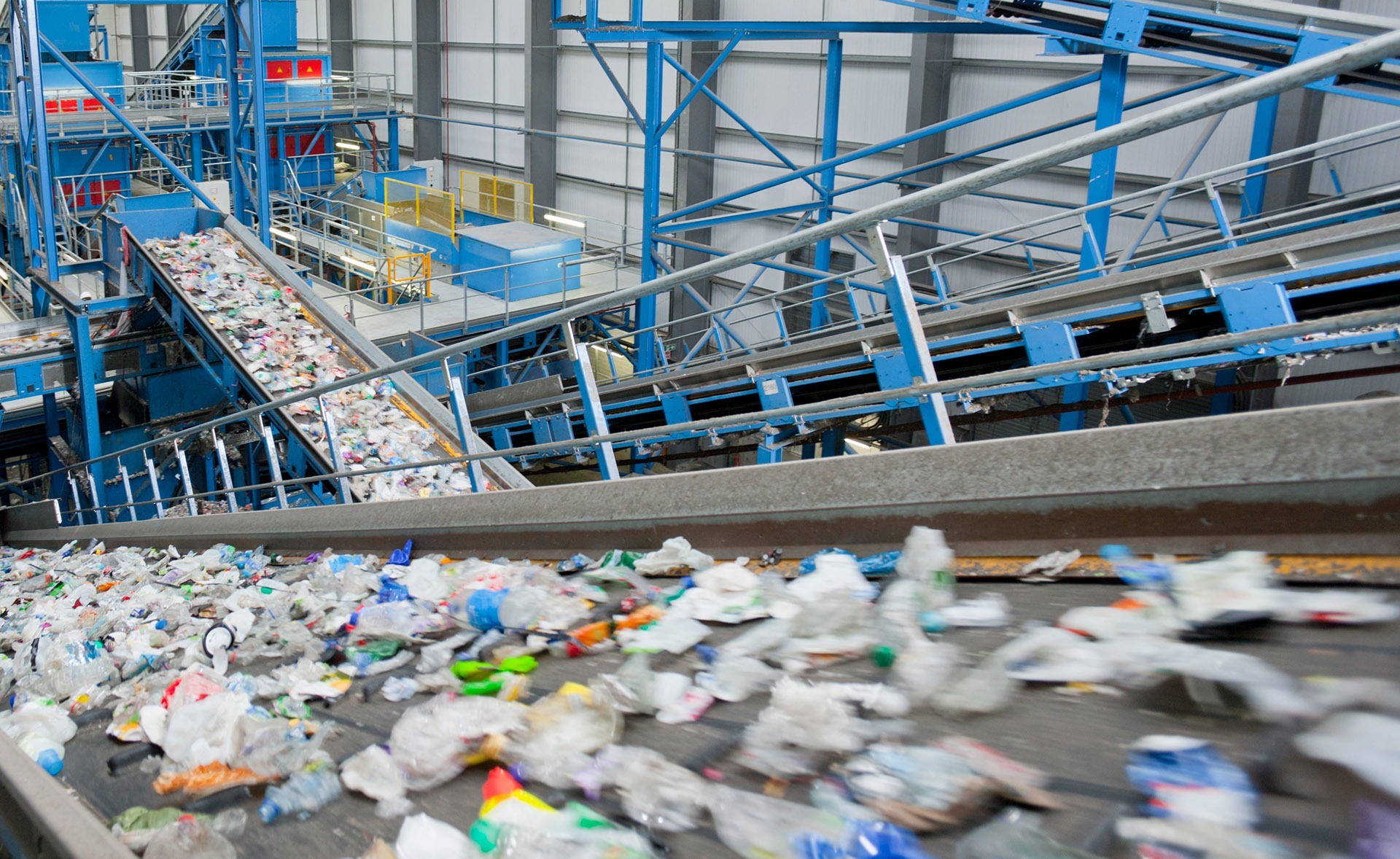Uganda is currently in advanced prep stages for the construction of the first 273 km of the planned 1,724km Standard Gauge Railway (SGR). Construction of the Eastern route of the railway running from the border town of Malaba to Kampala will cost $2.3b. The railway will traverse the towns of Tororo, Butaleja, Namutumba, Luuka, Iganga, Mayuge, Jinja, Mukono, Wakiso and Kampala.The Infrastructure Magazine’s Jacob Okwii sat down Eng. Kasingye Kyamugambi, the SGR Project Coordinator in the Ministry of Works & Transport, to ask a wide range of questions on the progress of the SGR:
Let us start from the basic. Uganda is currently undertaking several infrastructure projects. Why do we need the SGR anyway? Why now?
Developing modern infrastructure as enshrined in the second National Development Plan (NDP II) and the Uganda Vision 2040, remains a key ingredient in achieving the country’s middle-income aspirations. Infrastructure development is primarily meant to provide a conducive investment climate that attracts large foreign direct investment especially in heavy industries and services. This will serve to reverse the large trade imbalance in the country due to limited exports. There is worldwide competition to attract investors by different countries.
It is important that Uganda’s investment climate is competitive, globally. Investors want to be assured of reliable, cheap and adequate transport services to the markets. This is the basis of developing a modern railway. To understand the benefits of the railway, we need to know that we are in the realm of global competitiveness. The fundamentals of competitiveness, one of which is transport, must be significantly strengthened and improved. What the SGR does for Uganda is to create a competitive environment.
Currently because of the challenges- especially around reliability and travel time with the existing railway system, the country continues to lose at least $1.5billion, a year.
The SGR will reduce the time taken to move cargo from the port of Mombasa to Kampala, from the current average of 7-14 days to a single day. That will change the turnaround time for business. This will be a fundamental transformation to the flow of commerce in this country.
Under the Northern Corridor Integration Projects (NCIP), the four countries of Kenya, Uganda, Rwanda and South Sudan agreed- and will construct a standard gauge railway connecting their four capitals. Uganda in particular has planned to develop 1,724Km of SGR network in a phased manner, starting with the Malaba-Kampala route (273km).
Uganda’s strategic geographical positioning, puts it at the heart of the East and Central Africa logistics chain and can evacuate its products through the ports of Djibouti, Mombasa and Dar es Salaam among others. This can easily translate into Uganda being a regional inland logistical hub.
The SGR is an inter-state project. What agreements/protocols is Uganda signing with the other countries like Kenya, Rwanda and South Sudan for purposes of building and operationalizing the inter-state-SGR?
The Ministry of Works & Transport spearheaded the formulation of the SGR Northern Corridor Integration Projects (NCIP) framework and preparation of the SGR original protocol. This protocol provides for the four Partner States (Kenya, Uganda, Rwanda, South Sudan) to follow the same standards and specifications which will allow the development of a seamless railway transport system across the region. It also emphasizes the use of Chinese Class 1 railway standards.
In November 2016, Kenya and Uganda issued a joint communique on joint sourcing of financing and harmonizing construction timelines among others. In June 2017, Uganda and Kenya signed a bilateral synchronizing construction timelines with the Naivasha-Kisumu, Kisumu-Malaba with Malaba-Kampala routes. It was agreed that Kisumu-Malaba and Malaba-Kampala routes be constructed simultaneously in order to increase viability of SGR Project.
Prior to this bilateral agreement, Uganda had entered into an Engineering, Procurement, Construction (EPC) Turnkey commercial contract with China Harbour Engineering Construction Ltd (CHEC) for the development of the SGR eastern route section from Malaba to Kampala.
The Governments of Uganda and Kenya agreed on an Operations Model which will govern the operations of the SGR. This has been forwarded to the financier. For Operation and Maintenance, the MoWT/SGR Project have signed a memorandum of understanding with CHEC to undertake operations in the interim as the country builds own capacity. The Government of Uganda (GoU) and that of Kenya (GoK) have signed a Communique for the use of one Operator on the Mombasa-Kampala SGR.
Further, Uganda’s Ministry of Works & Transport and their Kenyan counterpart have identified policies that will increase the viability of the railway line. The respective Ministers approved the policies. For the Uganda part, these will be forwarded to Cabinet and Parliament during the process of loan approval.
What’s the progress on financing?
Discussions towards financial closure are moving on well with the Exim Bank of China. The China Exim Bank has hired consultants who are appraising the SGR Uganda project. The consulting firm, the Fourth Railway Survey Design Institute, a Fortune 500 listed company is engaging Uganda’s SGR technical team, finance and works officials to review the entire project.
This is an important step in the lifecycle of the project especially as the project moves towards securing financing. The consultants will look at the technical, financial and the economic viability- a routine procedure carried out by all financiers for mega infrastructure projects.
The appraisal team will be evaluating whether the project as designed is economically viable, whether all the engineering planning has been well done and whether all the risks both technical and financial have been taken care of.
What other major pre-construction activities have been done?
We completed the feasibility study and engineering design, which was done by Gauff Consultants. This exercise provided the Ministry of Works & Transport (MoWT) with the engineering design, economic and financial parameters that would be a basis for engaging the contractor and the consultants. It was the basis for part preparation of employer’s requirements given to the contractor. In addition, Gauff provided the environment and social impact assessment report, which was later used to get the Certificate for Environment and Impact Assessment from the National Environment Management Authority (NEMA).
Secondly, the SGR project management also developed the Employer’s Requirements. These are a set of requirements needed by the MoWT/SGR project as the employer of the contractor, to solicit the bid from the contractor. The Project prepared the Employer’s Requirements based on the NCIP requirements, the feasibility and engineering study earlier done by the consultant, Gauff. These Employer’s Requirements emphasized functionality of the railway system; including speed, durability, major geometrical parameters and the standards. These standards are compliant with China Class 1 railway standards.
Thirdly, procurement of the Contractor. The Ministry (of Works & Transport) spearheaded the signing of the Memorandum of Understanding and subsequent procurement of China Harbor and Engineering Co. Ltd. (CHEC) as the contractor for the building works. The contractor was selected following the Public Procurement and Disposal Authority (PPDA) law. The contractor carried out preliminary works (engineering surveys, geotechnical investigations, hydrological assessments, etc) to ascertain the conditions on the route and confirm that the data given by the employer was definite. In all, 94 geotechnical boreholes were drilled and 74 excavation pits were made. Survey works and geophysics investigations were carried out. The contractor prepared the Bankable Feasibility Study and Engineering Design for Malaba-Kampala based on the Chinese Class 1 standards.
Fourthly, the Ministry prepared all the loan application support documents which include Certificate of Environmental & Social Impact Assessment (ESIA), Bankable Feasibility Study, Contract Documents and all other reference documents to support the loan application.
Fifth, using in-house capacity, a project document was prepared and approved by the Minister, detailing the development of 1,724 km of railway line. The Project also prepared the Strategic Plan 2016-2020, detailing the activities required for the development of the railway from Malaba to Kampala and the light rail.
Six, land Acquisition Strategy: The Strategy for Land Acquisition was prepared and was approved by the Chief Government Valuer. The railway corridor was gazetted as required by Land Acquisition Act. Sensitization and socio-economic assessment of the affected persons were carried out. Memoranda of Understanding were signed with all the affected districts. Permission for Right of Way was obtained from the National Forestry Authority for 8.9km of land in National gazetted forests. The certificate for railway corridor of 53km in wetlands was obtained from the National Environment Management Authority (NEMA). To date 100km of 60m corridor have been acquired and compensated for. Resettlement Action Plan for 82 per cent of the route has been done- and this is still ongoing. Thirty-three schools and 11 factories will be affected. The challenges are mainly to do with compensation issues.
Private land owners where the SGR will be compensated and they relocate elsewhere. How are you dealing with the issue of public utilities; where for example the SGR crosses where public utilities already exist?
We have done what we call Design Reconciliation and Harmonization which has surveyed all possible conflict between the SGR and other existing/planned public infrastructure. For example, the intersection at Access Road in Jinja between JICA flyover currently under construction over River Nile in Jinja, the meter gauge railway and the standard gauge railway has been harmonized after intense discussions with all the stakeholders including Kampala Capital City Authority, Uganda National Roads Authority, and others. The flyover was elevated higher and the SGR will have a separate grade crossing.
In the case of the SGR and the planned Jinja Kampala Express Way (JKEW), to avoid a lot of intersections between the JKEW and the SGR that would require harmonizing the levels and angles of approach, the JKEW is being re-aligned to run along the SGR and UNRA has taken this positive initiative for the sake of harmonizing infrastructure along the corridor.
As far as electricity installations are concerned, we are working with Uganda Electricity Transmission Company (UETCL) to ensure that future constructions and designs are harmonized with the SGR. On the other hand, there are areas where the SGR may need to extend power for its operations, where currently no extensions exist. In such circumstances, we work with UETCL to address the challenge. Currently, together with UETCL we have carried out survey and design that will guide in extension of electricity from UETCL 132kV lines to the railway traction substations. Approximately 60km with 132kV HEV will be extended to the planned five traction sub-stations of Tororo, Buwoola, Iganga, Nyenga and Namanve.
For district urban community access (DUCAR) roads, we are also harmonizing with all the district authorities to provide access through the SGR since SGR will be elevated all the way from Malaba to Kampala.
However, there may be instances where some utilities may have to be relocated. We are working with the National Water & Sewerage Corporation (NWSC), UMEME and other entities to relocate their utilities that traverse the SGR line. We have identified 17 conflict points with UETCL that will require relocation of transmission lines, either by providing underground cables and/or shifting the lines.
What plans do you have in place to take care of natural hazard like earthquakes?
We have done the Earthquake Hazard Assessment- which was also required out by the financier. We hired consultants to carry out an earthquake hazard assessment along Malaba-Kampala route which is necessary during the detailed engineering design of the system. This was done and reports have been submitted, which we have also passed on to the financiers.
We have also done another study called the Geo-hazard Assessment Study. We did this together again with the Directorate of Geological Survey and Mines (DGSM). In this study we carried out a geo-hazard assessment aimed at assuring the financier that the railway is not affected by mudslides, floods or geological catastrophes. The report is ready and approved.
What will happen if a precious mineral is found on the course of the SGR after it has been constructed?
Together with the Ministry of Energy & Mineral Development, particularly the Directorate of Geological Survey and Mines (DGSM), we have carried out a mineralogy assessment study aimed at ensuring that the railway does not traverse areas with high mineral potential which may require future diversion of the railway. So that is taken care of.
You have done several surveys already. But the nature of these works require frequent surveys. What plans do you have in place to take care of this?
We have taken the National Survey Controls into consideration. Due to the demands of the contractor to have national survey beacons that are less than 5 years old, the SGR Project, together with the Department of Surveys and Mapping, is establishing national survey controls along Kampala-Malaba route. There will be 27 beacons planted either in schools or health centres.
You cannot talk about a huge project like this without talking about safeguards- environmental, social and otherwise. What safeguards are you putting in place for the good of the people of this country?
Using our internal project capacity, we have prepared the Environmental Safeguards Strategy for the Malaba-Kampala section detailing procedures to ensure that all the environment laws and regulations are observed. Similarly, and again using in-house capacity, a Social Safeguard Strategy has been prepared and approved. This strategy will ensure that the social, cultural, HIV/AIDS prevention and other norms of the communities in contact with the SGR are observed. It draws experience from the challenges we have had in the construction sector concerning social and cultural issues. We also have in place the Occupational Safety & Health (OSH) Strategy which has been prepared to ensure that construction regulations and guidelines, working conditions of the people, are strictly followed.
The SGR is a first in Uganda. What are you doing to ensure that local capacity of Ugandans is built for SGR works, operation and maintenance?
Again, we have prepared a Capacity Building Strategy. This strategy aims to achieve transfer of technology and skills to the indigenous Ugandans, especially in the areas of design construction and Operation and Maintenance.
This first phase of project alone will cost Ugandans US$ 2.3 billion (UShs 82 trillion). How will you ensure Ugandans get value for this money? That the SGR will not in the near future break down and require substantial renovation?
We have a Quality Assurance Strategy. In order to ensure that the works done and services provided meet the standard as stipulated in the contract, a robust Quality Assurance Strategy has been prepared which includes the design review strategy, construction assurance strategy and the materials quality control strategy. A laboratory will be established and equipped to help the employer carry out the quality assurance function. This stringent mechanism is required to ensure that the railway system functions as designed and lasts for a period of 100 years.
The MoWT/SGR Project has signed an MoU with the Engineers Registration Board (ERB) to regularize the qualifications of the engineers, technicians and technologists that will be coming to work on the Project. All will have to be certified by ERB.
We have also signed an MoU with the Ministry of Internal Affairs to ensure that all the foreigners coming into the country to work on the Project must seek a ‘no-objection’ from the SGR Project. This will ensure that the personnel entering the country are those strictly required for SGR construction and in compliance with the local content approved guidelines.
The World Bank, IMF and even the African Development Bank are making the argument that when developing countries invest in big infrastructure projects like the SGR, they should not just look at the final piece of infrastructure. Given the big money investment governments should ensure that a good part of this borrowed money is injected into the local economy to spur the economic growth through employment, purchase of locally manufactured goods and services. What is your plan for local content to boost the local economy?
We have prepared a Local Content Strategy, which describes how the Project will ensure that at least 40 per cent of the value of works is spent locally. Hon. Monica Azuba, the minister of Works and Transport signed off the strategy a few months ago. For us, the SGR local content refers to the benefit brought to Uganda through the competitive and gainful participation of citizens and the Ugandan private sector in this multi-billion infrastructure project. The local content ratio will be 9:1 Ugandans to foreigners. We have discussed with cement manufacturers to produce the low alkaline, low sulphate good grade cement required for railway construction. We have discussed with steel manufacturers to produce the steel required for the railway concrete structures. Further discussions with the Uganda National Association of Building and Civil Engineering Contractors (UNABCEC) are under way to ensure sub-contractors do take on some of the civil works. Discussions with the Private Sector Foundation Uganda (PSFU) and Ministry of Education & Sports are ongoing to ensure that at least a minimum of US$700m is spent locally.
To ensure that all the materials that come into the country meet the quality mark in compliance with the standard, MoWT/SGR Project have signed an MoU with the Uganda National Bureau of Standards (UNBS). The UNBS/SGR Project will not only carry out pre-shipment inspections but also pre-production, in-production and post-production of the equipment, locomotives and rolling stock for SGR. The standards bureau will also improve their laboratories to develop capacity to test the construction materials that will be used on the Project as per agreed testing regime and standards. The Bureau will also recognize the Chinese Class 1 railway standards used by the Project as the official/legal standards for development of SGR.
There are several possible areas of participation for the local private sector including supply of major construction materials including cement, timber, steel and stone products. The others are security services, petroleum products, consultancy, legal, vehicle hire, legal and labour among others. To date, the SGR project office has visited and held several discussions with Hima Cement, Tororo Cement, Kampala Cement, steel manufacturers and insurers, PSFU, Uganda Chamber of Mines and Petroleum (UCMP), Ministry of Trade & Industry. A local content data base is being developed.
Thank you for speaking to us, and our best wishes with the huge task ahead of you












